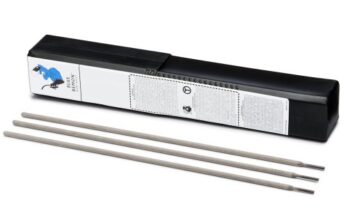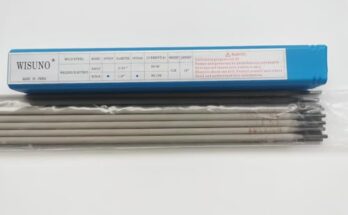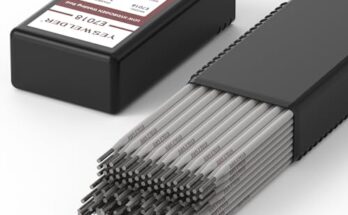Thinking about tackling a welding project? Understanding the right tools is crucial for success. Let’s dive into the world of 6014 welding rod and explore its properties, applications, and best practices. You’ll learn what makes it unique and how to use it effectively.
Here’s where we’ll unpack the basics of 6014 welding rods, covering
their composition, key characteristics, and why they’re chosen for specific applications.
The Composition and Properties of 6014 Welding Rods
The 6014 welding rod is a low-hydrogen, rutile-coated electrode designed for excellent weld penetration and ease of use. Its core wire is typically composed of mild steel, offering good strength and ductility. The rutile coating is crucial; it’s responsible for the rod’s smooth arc, slag detachment, and overall weld quality. This coating contains various minerals that stabilize the arc, shield the molten weld pool from atmospheric contamination (like oxygen and nitrogen which can cause porosity), and contribute to a smooth, easily cleaned weld bead.
The “6014” designation itself provides important information. The “60” signifies the tensile strength (60,000 psi), while the “14” relates to the welding position (flat, horizontal, and vertical up) and the type of coating. This classification system helps welders quickly identify the rod’s capabilities and suitability for their project. Think of it like choosing the right type of screw for a particular job – a tiny screw won’t work for a heavy-duty application, and likewise, choosing the incorrect welding rod can compromise the strength and integrity of your weld.
Compared to other welding rods like 7018 (known for its high strength and low-hydrogen characteristics often used in critical applications), 6014 stands out for its ease of use and versatility, making it a popular choice for beginners and experienced welders alike. While it might not offer the same strength as 7018, its forgiving nature makes it ideal for many everyday applications. It’s like comparing a standard screwdriver to a specialized torque wrench; both serve their purpose, but the screwdriver’s simplicity makes it a go-to tool for everyday tasks.
Applications of 6014 Welding Rods: Where it Shines
6014 electrodes are incredibly versatile. They’re frequently employed in various applications requiring good penetration and a smooth weld. For example, you’ll often find 6014 used in sheet metal fabrication, automotive repairs, and general maintenance welding. Its ability to easily weld in multiple positions (flat, horizontal, and vertical up) makes it a favorite amongst hobbyists and professionals.
Imagine repairing a rusted-out section of your car’s chassis. 6014’s ease of use and versatility allows for efficient repairs, even in tight spaces. Or perhaps you’re constructing a metal art piece. The smooth weld created by the 6014 electrode ensures an aesthetically pleasing finish. Its ease of operation and readily available nature make it perfect for quick repairs or smaller projects where exceptional tensile strength is not the primary concern.
This versatility is a key advantage. Other welding rods might be better suited to specific applications that require a higher tensile strength or resistance to extreme conditions, but the 6014 is the reliable workhorse that’s always ready to handle a variety of tasks. This adaptability makes it an essential addition to any welder’s toolbox.
Choosing the Right 6014 Welding Rod
Selecting the appropriate 6014 rod depends on factors such as the thickness of the metal being welded, the type of metal, and the desired weld quality. Let’s explore some essential factors.
Factors to Consider When Selecting a 6014 Electrode
The diameter of the 6014 electrode is a crucial factor. Thicker rods are needed for welding thicker metals, providing the necessary heat input for proper fusion. Thinner rods are better suited for thinner materials, preventing burn-through. This is similar to choosing the right drill bit size for a particular job; a bit too small will struggle, and a bit too large will cause damage. Understanding this relationship between electrode diameter and material thickness is fundamental to successful welding.
The metal’s composition also plays a role. While 6014 works well with mild steel, its performance on other materials might vary. Always check the manufacturer’s specifications to ensure compatibility. Some manufacturers provide specific guidelines for use with different steel alloys. This is like choosing the right paint for a specific surface – you wouldn’t use the same paint for wood and metal.
Finally, consider the desired weld quality. If a flawless, visually appealing weld is paramount, proper technique and rod selection are crucial. Maintaining a consistent arc length and speed during the welding process significantly impacts the final weld. It’s a skill that develops with practice, but choosing the right 6014 rod is a good starting point for achieving a quality weld.
Different Manufacturers and Their 6014 Offerings
Several manufacturers produce 6014 welding rods, each with slight variations in their formulations and characteristics. While the core properties remain consistent across brands, subtle differences might exist in terms of arc stability, slag characteristics, and ease of use. Lincoln Electric, Hobart, and Miller are just a few prominent examples, each providing high-quality 6014 electrodes.
Exploring the specifics of different manufacturers’ 6014 offerings allows for a tailored selection based on personal preferences and project requirements. Some welders prefer the arc characteristics of one brand over another, just as some might prefer a particular brand of paint due to its ease of application or coverage. Reading reviews and comparing specifications from various manufacturers can help make an informed decision.
Safety Precautions When Using 6014 Welding Rods
Welding can be dangerous if proper safety measures aren’t followed. Let’s look at some crucial safety tips.
Essential Safety Gear and Procedures
Welding safety is paramount. Always wear appropriate personal protective equipment (PPE), including a welding helmet with a shade appropriate for the arc, welding gloves, a long-sleeved shirt, and closed-toe shoes. Eye protection is essential to prevent arc eye, a painful condition caused by exposure to the intense ultraviolet (UV) radiation emitted during the welding process. This is just as important as wearing a helmet while riding a motorcycle – it’s a fundamental safety requirement.
Proper ventilation is crucial to avoid inhaling harmful fumes and particulate matter generated during welding. Working in a well-ventilated area or using a respirator is strongly recommended, especially when working in enclosed spaces. This is akin to ensuring proper ventilation in a paint booth – minimizing exposure to hazardous substances is crucial for maintaining a healthy work environment.
Proper grounding is essential to prevent electrical shocks. Ensure the welding machine is properly grounded before starting any work. A faulty ground can lead to dangerous electrical hazards. Similar to grounding electronic devices, grounding a welding machine prevents accidental electrocution.
Understanding and Avoiding Common Hazards
Arc flash is a serious hazard that can cause severe burns and even death. Maintaining a safe working distance from the arc and using appropriate PPE is essential to prevent arc flash. The intense heat generated by the arc can easily ignite flammable materials. Keep flammable substances away from the welding area, and never weld near flammable liquids or gases. This is comparable to taking precautions around a campfire – keeping flammable materials at a safe distance is essential to prevent accidents.
6014 Welding Techniques and Best Practices
Mastering the art of welding requires practice and attention to detail. Let’s explore some key techniques.
Achieving a Consistent and Clean Weld
Maintaining a consistent arc length is critical for achieving a clean and strong weld. The arc length should be kept as recommended by the manufacturer of the welding rod. An arc that’s too long or too short can lead to uneven penetration and poor weld quality. This is similar to maintaining a consistent speed while driving a car – it’s essential for smooth and controlled movement.
Proper travel speed is essential. Moving too fast can cause the weld to be too shallow, while moving too slow can lead to excessive heat and burn-through. A consistent speed is crucial for obtaining a consistent penetration and creating a quality weld. This precision is like the steady hand of a surgeon – it’s a skill honed with practice.
Post-weld cleaning is also crucial. After welding, remove any slag and spatter from the weld bead. This ensures a smooth, clean weld. Neglecting this step can lead to a weak, uneven weld. This is analogous to cleaning up after a woodworking project – the final touch is essential for a quality outcome.
Troubleshooting Common Welding Problems
Porosity, or small holes in the weld, can occur due to several factors such as improper arc length, inadequate shielding, and contaminated metal. Addressing these issues can prevent future porosity. It’s like debugging a computer program – identifying and correcting errors is crucial for achieving the desired outcome.
Lack of penetration, which means the weld doesn’t fully penetrate the base metal, might be caused by insufficient heat input, incorrect electrode angle, or insufficient arc length. Adjusting these parameters is essential for achieving a strong and secure weld. It’s like making sure the foundations of a building are properly laid before starting construction.
6014 Welding Rod: Comparisons and Alternatives
Let’s compare 6014 with other welding rods to highlight its strengths and weaknesses.
Comparing 6014 with Other Electrode Types
Compared to 7018, 6014 lacks the extreme tensile strength but excels in ease of use. 7018 is a low-hydrogen rod ideal for critical applications requiring extreme weld strength, while 6014 is a general-purpose rod ideal for everyday applications. This is like comparing a high-performance sports car to a reliable family sedan; both serve different needs effectively.
Compared to 6010, 6014 offers better weld quality in the vertical up position, but 6010 might be preferable for applications requiring deeper penetration in specific positions. 6010 is a cellulosic electrode known for its high penetration capabilities, particularly in overhead welding. This comparison highlights the rod’s nuanced strengths, similar to comparing different types of camera lenses each best suited for specific photographic conditions.
When to Use Alternatives to 6014
If extreme strength is required, 7018 is the preferred choice. If deeper penetration is needed in specific positions, consider a 6010 electrode. If working with aluminum, dedicated aluminum welding rods are needed. This underscores the idea of selecting the right tool for the job, similar to choosing the correct type of wrench for a specific bolt.
Maintenance and Storage of 6014 Welding Rods
Proper maintenance and storage help to ensure the quality and longevity of your welding rods.
Maintaining the Quality of Your Electrodes
Keep the 6014 rods dry. Moisture can affect the arc stability and weld quality, so protect your electrodes from moisture. This is analogous to protecting electronics from water damage.
Proper storage is crucial. Store them in a dry, cool place away from extreme temperatures and moisture. This will maintain their quality and prevent damage. Proper storage increases their shelf life, much like storing food properly increases its lifespan.
Extending the Lifespan of Your Welding Rods
Avoid dropping or damaging the rods. Damaged rods can lead to inconsistent welds and are often unusable. This is analogous to ensuring the integrity of tools in a workshop.
Applications and Projects Utilizing 6014 Welding Rods
Let’s delve into real-world scenarios where 6014 proves highly beneficial.
Real-World Examples and Case Studies
Building a simple metal shelf: 6014’s ease of use makes it ideal for constructing a sturdy yet aesthetically pleasing metal shelf.
Repairing a damaged car part: Its versatility makes 6014 an excellent choice for repairing a rusted or damaged car part. This highlights the rod’s utility in diverse situations.
Creating custom metal art: The smooth weld produced by 6014 electrodes can enhance the aesthetic appeal of metal art pieces. The versatility translates into a broad range of creative possibilities.
Frequently Asked Questions
Here are some frequently asked questions about 6014 welding rods.
What is 6014 welding rod best for?
6014 welding rods are best suited for general-purpose applications where a smooth, easy-to-clean weld is needed. They’re excellent for mild steel welding in various positions, making them ideal for automotive repairs, sheet metal fabrication, and hobbyist projects. They excel in scenarios where ultimate tensile strength isn’t the primary concern.
What are the limitations of 6014 welding rods?
While versatile, 6014 rods don’t offer the same high tensile strength as other electrodes like 7018. They might not be suitable for high-strength applications or those requiring exceptional resistance to cracking or extreme conditions. Learn more about high-strength welding rods if your project demands it.
How do I choose the correct diameter of 6014 welding rod?
The diameter of the rod should be matched to the thickness of the metal you are welding. Thicker metals require thicker rods to provide sufficient heat input for proper fusion. Consult a welding guide or the manufacturer’s specifications for the recommended diameter for your project.
Can I use 6014 on other metals besides mild steel?
While primarily used for mild steel, 6014 can be used on some other materials, but its performance might vary. Always consult the manufacturer’s guidelines to ensure compatibility with the specific metal you are using. Using the incorrect rod can compromise the weld’s strength and quality.
What are the safety precautions I should take when using 6014 welding rods?
Always wear appropriate PPE, including a welding helmet, gloves, and protective clothing. Ensure proper ventilation to avoid inhaling harmful fumes. Maintain a safe distance from the arc to prevent arc flash. Never weld near flammable materials. Thorough safety precautions are essential for safe welding practices.
How do I store 6014 welding rods properly?
Store your 6014 rods in a dry, cool place away from extreme temperatures and moisture. Moisture can significantly affect the quality of the welding process. Keeping them dry will preserve their quality and extend their shelf life.
What should I do if I encounter porosity or lack of penetration in my welds?
Porosity might indicate issues with arc length, shielding, or metal contamination. Lack of penetration might be caused by insufficient heat input, incorrect electrode angle, or too short an arc length. Review your technique, adjust parameters as necessary, and consult a welding guide for troubleshooting.
Final Thoughts
The 6014 welding rod is a versatile and user-friendly tool perfect for various applications. Its ease of use, smooth arc, and good penetration make it a favorite among both beginners and experienced welders. However, understanding its limitations and choosing the appropriate rod diameter is crucial for achieving optimal results. By combining proper technique with the right equipment, you can successfully tackle numerous welding projects, from simple repairs to more complex creations. Remember always to prioritize safety and utilize appropriate PPE throughout the welding process. So grab your 6014 welding rods, get to work, and create something amazing!


